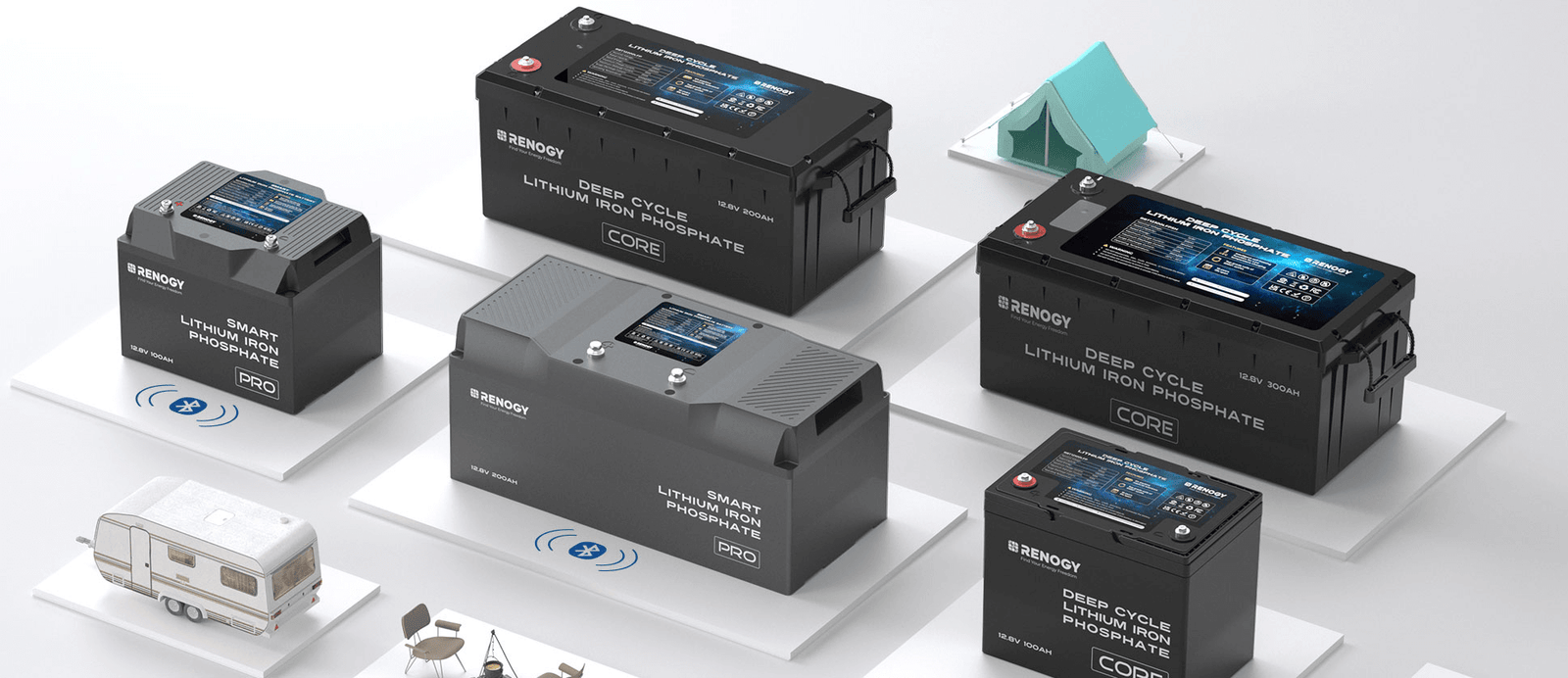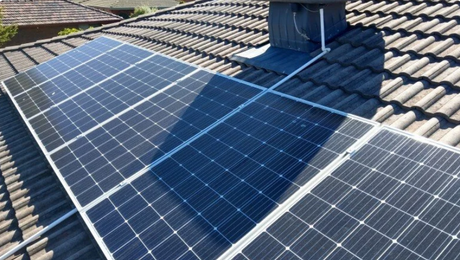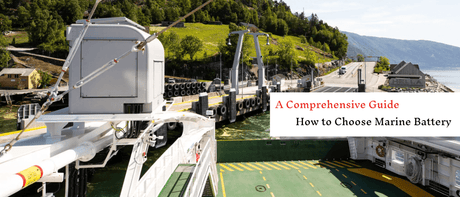Over the years, LiFePO4 batteries have gained attention due to their safety, efficiency, and long life span. Due to their unique and stable chemical composition, they are preferred in various applications, such as electric vehicles, portable devices, and industrial, and renewal energy systems.
In this article, we delve into the world of a LiFePO4 battery. You will learn more about its incredible potential through its features, benefits, applications, and why it is better than other battery types.
If you’re looking to invest in a LiFePO4 battery, Renogy’s Core Mini 12V 100Ah Batteries and Core Mini 12V 300Ah batteries are excellent options that combine impressive performance with a compact design, making them ideal for off-grid solar systems, RVs, and backup power solutions.
What is a LiFePO4 Battery?
A LiFePO4 battery is a type of lithium-ion battery that utilises lithium-ion phosphate material on the cathode. This chemistry composition has a wide range of benefits compared to traditional lithium-ion batteries. For instance, LiFePO4 batteries have enhanced thermal stability and a long life span.
LiFePO4 batteries have high energy density, making them safe and suitable for various applications, such as solar systems, electric vehicles, and portable power devices.

Key Features of LiFePO4 Batteries
LiFePO4 batteries are famed for their longevity, improved safety, and high-energy density preferred in a wide range of applications. The key characteristics of a LiFePO4 battery include:
Safety
LiFePO4 batteries are not prone to thermal runaway and overheating like other battery types. There is no risk of explosion or flaming.
Longevity
LiFePO4 batteries have robust chemical stability thanks to iron phosphate's extremely strong crystal structure, making them slow to degrade. Additionally, they have over 2000 cycle life cycles, making them more long-lasting than conventional batteries. Also, during the charging and discharging processes, the battery does not fade due to the continuous action of the lithium ions.
Highly-Efficient
LiFePO4 batteries have a high charge and discharge efficiency, making them favourable for applications requiring quick energy transfer.
Eco-Friendly
Some metals used in making LiFePO4 batteries include nickel and cobalt, which are rare and expensive metals. Therefore, they require careful treatment and recycling, making LiFePO4 more eco-friendly than lead-acid batteries.
LiFePO4 Battery Performance and Specifications
The following are the key performance and specifications of LiFeP04 batteries.
Voltage and Capacity
The nominal voltage of LiFePO4 batteries is approximately 3.2 volts. When fully charged, the voltage is 3.6 volts and about 2.5 volts when fully discharged. To achieve a battery pack with a higher voltage, such as 12V, 24V, or 48V, you must connect multiple batteries in series.
For example, if you want to create a 12V system, connect four LiFePO4 batteries in series, i.e. 3.2V x 4=12V. If connected in series, every battery contributes its voltage to the total.
To calculate the pack voltage, multiply the nominal voltage, 3.2V, by the number of cells connected in series.
Amp-hours measures the battery capacity, showing the charge a battery can hold within a given time frame. The formula for Amp-hours (Ah) is:
Energy (Wh)= Voltage (V) x Capacity (Ah)
Cycle Life and Depth of Discharge (DoD)
The cycle life of LiFePO4 is the number of full charge and discharge cycles the battery undergoes before its capacity falls beneath a prescribed threshold, usually 80% of its capacity.
The cycle life of LiFePO4 batteries is inversely correlated to the Depth of Discharge (DOD). This means that high or frequent DOD reduces the cycle life of a battery.
If the battery discharge is deeper, the lifespan is shorter since the increased stress is applied to the internal parts during the discharge cycles.
The optimal DOD range for LiFePO4 batteries should be approximately 80% to maximise the battery cycle life.
Energy Density
The energy density of a LiFePO4 battery refers to the amount of energy it can hold per unit volume or weight. Energy density is measured in watt-hours per litre (Wh/L) or watt-hours per kilogram (Wh/kg).
Lithium-ion batteries have higher energy capacity than LiFePO4 batteries. For instance, a typical Li-Ion battery has an energy density of approximately 45-120 Wh/lbs. (100-265 Wh/kg), while LiFePO4 has an energy density of 40–55 Wh/ lbs. (90-120 Wh/kg).
Although Lithium-ion batteries have a higher energy density, applications such as off-grid power systems and electric vehicles prefer LiFePO4 due to its longevity and enhanced safety features. Additionally, most applications consider the energy density disparity between Li-ion and LiFePO4 negligible.
A LiFePO4 Battery for Every Application
LiFePO4 batteries are highly efficient and durable. Therefore, they are preferred in various industrial and small-scale applications. Here are some of the common applications of LiFePO4 batteries.
Off-Grid Solar Systems

One primary requirement for setting up an off-grid system is power storage. LiFePO4 batteries are reliable and an excellent choice for storing renewable solar energy. Additionally, LiFePO4 batteries are used in Uninterruptible Power Supply (UPS) systems to provide power backups during outages.
The Renogy Core Mini 12.8V 100Ah Lithium Iron Phosphate Battery is an ideal choice for such applications. Designed for efficiency and durability, this compact yet powerful battery stores solar energy effectively, offering a long cycle life of over 4000+ cycles. Its lightweight design makes it perfect for smaller systems where space is limited, while its advanced safety features ensure it remains reliable under varying conditions. If you're building a small off-grid system or need a dependable backup power solution, the Core Mini 100Ah can keep your system running smoothly for years to come.
Electric Vehicles
Due to their high-power output, enhanced safety features, and long life cycle, LiFePO4 batteries are commonly used in electric vehicles. Some EV brands, such as Tesla, have integrated LiFePO4 batteries into their EVs for improved performance range.
Portable Electronics
LiFePO4 batteries power portable devices such as laptops, smartphones, tablets, and power banks. LiFePO4 batteries have high energy density, are compact, safe, and have a longer runtime than ordinary lithium batteries.
Medical Devices
LiFePO4 batteries are reliable and safe, thus suitable for medical devices such as insulin pumps, defibrillators, and other medical gadgets. They offer a consistent power supply and a long life cycle, which is critical in medicine.
Marine and RV Applications

RV and marine vehicles such as kayaks and boats have high power demands for off-grid usage. LiFePO4 batteries are highly efficient and preferred for energy storage. In addition, they are lightweight and durable, making them efficient for both systems.
For marine and RV applications, the Renogy DuoHeat Tech - Core Mini 12V 100Ah Lithium Iron Phosphate Battery is a standout choice. Equipped with DuoHea technology, this battery is designed to perform well even in extreme conditions, making it perfect for outdoor adventures. Whether you're off-grid camping, boating, or RVing, this battery provides consistent power with enhanced thermal management, ensuring longevity and reliability. Its lightweight design and high energy density make it the ideal solution for powering RV systems or marine electronics without adding unnecessary bulk. With its robust cycle life and safety features, it’s built to withstand the demands of life on the road or water.
Industrial Uses
LiFePO4 batteries are designed to withstand high temperatures and low discharge rates for prolonged periods. This makes them ideal for use in various industrial settings, such as machinery operations.
Powering Tools and Home Appliances
Due to their safety, lightweight, and longevity nature, LiFePO4 batteries have found their way into various tools and home appliances, such as vacuum cleaners, power tools, and lawnmowers. They provide high energy output and extended usage time.
LiFePO4 Batteries Vs. Non-Lithium Batteries
LiFePO4 batteries emerge as the winner compared to other battery technologies due to their enhanced safety, wider range of operating temperatures, and long life span. So, how do LiFePO4 batteries compare to non-lithium batteries?
LiFePO4 Batteries Vs. Lead-Acid Batteries
LiFePO4 and lead-acid batteries store energy, each with distinctive advantages and disadvantages. However, LiFePO4 is better preferred than lead-acid.
LiFePO4 batteries have higher energy density, enabling them to store more energy per unit volume and weight. Compared to lead-acid batteries, LiFePO4 batteries have a smaller battery pack for similar energy capacity. In addition, lead-acid batteries are bulkier and heavier than LiFePO4 batteries.
Lead-acid batteries' capacity declines with every charge and discharge cycle. The discharge-charge cycles do not affect the LiFePO4 batteries. After about 300 to 500 cycles, lead-acid batteries lose their ability to store energy.
LiFePO4 Batteries Vs. Gel Batteries
LiFePO4 batteries have a significantly longer cycle life, faster charging capabilities, higher energy density, and lower maintenance requirements than gel batteries. Due to these features, LiFePO4 batteries are preferred over gel batteries in applications where high performance and a long lifespan are essential.
Gel batteries are more cost-effective. However, they have lower energy density and a shorter lifespan. They are best suited in applications where upfront costs are a major concern and moderate power needs are required.
LiFePO4 Batteries Vs. AGM Batteries
Both batteries are suitable for various applications. However, compared to AGM batteries, LiFePO4 batteries are preferred due to their longer lifespan, faster-charging rates, and improved safety features.
LiFePO4 batteries are lighter than AGM batteries. They also have a higher energy density, which means they can store more energy in a smaller space. In applications where weight and battery size matter, such as in EVs, LiFePO4 is preferred over AGM.
When it comes to charging, LiFePO4 charges faster than AGM. You can achieve a full charge within one to two hours in LiFePO4, while a full charge in AGM may take 5 to 10 hours. Additionally, LiFePO4 has a higher discharge rate compared to AGM.
Final Thoughts
LiFePO4 batteries have exceptional features such as enhanced safety, superior performance, and extended lifespan, so they are preferred in various applications such as the renewable energy industry, electric vehicles, medical, and industrial applications. They are also environmentally friendly, making them suitable for personal and commercial use. With technological advancements, we expect more potential to unlock LiFePO4 for batteries.
FAQs About LiFePO4 Battery
1. What is the relative lifespan of LiFePO4 batteries?
LiFePO4 batteries can last 10 to 15 years, with approximately 2,500 to 9,000 charge cycles and proper maintenance.
2. What is the ideal operating temperature for LiFePO4 batteries?
LiFePO4 batteries have great thermal stability which allows them to continue operating efficiently under 20°C to 60°C (-4°F to 140°F) temperature range. However, the optimal performance range for LiFePO4 batteries is 0°C and 45°C (32°F and 113°F).
3. Is the LiFePO4 battery the same as the Lithium battery?
No, the chemical composition of LiFePO4 and lithium batteries is different. LiFePO4 batteries use lithium-ion phosphate, which enhances their longevity and safety, while lithium batteries utilise various chemical compositions, such as lithium-ion and lithium polymer.









